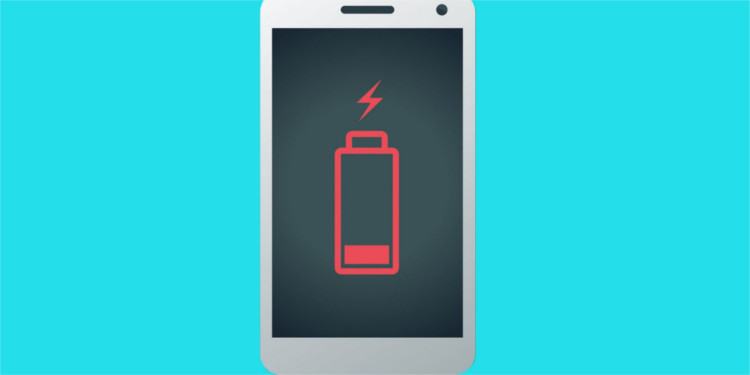The Great iPhone Empire | How Apple Abducted Our Brains and Our Bucks
Apple is certainly one of the world’s most successful corporations and boasts an iconic brand image. However, the company has recently come under fire for admitting that they have been purposefully slowing down iPhones in an attempt to entice consumers to upgrade (read: purchase) to the latest model. Consumers are becoming fed up, and Apple recently had to cut back its iPhone X production line after they found that (*shocker*) people don’t want to spend over $1,000 on a cell phone!
So how’d we get here, and what’s the future look like for the iPhone Empire?
A Brief History of Apple
The first Apple computer came out in 1976, and when the company went public four years later, it had a total worth of approximately $100 million.
However, Steve Jobs, who was leading the company at that point, left in 1985 and became part of the establishment again in 1997. When he came back, Apple was near bankruptcy and Jobs had the tough task of restructuring the business. One of the ways he did that was to reshape the company’s focus into one of innovation.

The 1998 release of the iMac computer proved the model was a strong seller from the start. It was one of the significant factors that symbolised much-needed improvement for the company.
In the years that followed, Apple changed the way people listened to and purchased music with the iPod and iTunes store. It brought tablets into the mainstream with iPads (and popularised the phrase, “There’s an app for that”).
Three years before the 2010 introduction of the iPad, however, iPhones entered the market. They drastically altered people’s perceptions about what smartphones could do and offered so many capabilities. The gadgets seemed like miniature computers and changed the definition of what a truly user-friendly cell phone looked like.
Innovation is synonymous with the Apple brand. However, there’s another word people often associate with the company nowadays: Greed.
How a Headphone Port Removal Became a Hot-Button Topic
Through the years, Apple has made controversial decisions that many analysts assert are engineered to keep customers buying more products from the company. For example, the announcement that the iPhone 7 would not include a headphone port caused an uproar among consumers and tech bloggers alike.
The redesigned exterior meant if people wanted to listen to music on the go and didn’t already own wireless earphones, they’d have to buy some. It should come as no surprise that Apple has its own to offer — called Airpods — but they cost around $159 (or €179.00) if purchased directly from the company.

Statistics from 2017 also indicate Apple’s decision to remove the headphone port from its popular smartphone contributed to a 343% increase in sales for Bluetooth headphones. Experts also say by making its later iPhone models in the same way, Apple helped set a new standard in the industry — and forced users to adapt or get left behind.
Does Apple Wait Too Long to Fix Problems?
People have also accused Apple of failing to promptly address prevalent issues with its products. Some models of the brand’s MacBook Pro had graphics card issues that caused affected computers to flash to a black screen when displaying video content to garble the on-screen material.
Disgruntled users were often unable to get adequate assistance from Apple, so they went on internet forums, discussed their tech woes and found they weren’t alone. At long last, Apple finally announced a repair program for the faulty laptops. By that time though, many people had already spent money and gone through hassles trying to resolve the problem independently, all while wondering why Apple wasn’t more proactive to solve the issue.
Apple Admits to Slowing Down Older iPhones to Compensate for Defective Batteries
In late 2017, Apple once again came under fire for officially admitting that a new update it released to remedy power supply issues with older iPhone batteries limited the processing speed of the respective models. People suspected their iPhones were slowing down, and they weren’t wrong. The outdated phones couldn’t handle the faster processing speeds, so they’d unexpectedly shut down in some cases.
Apple’s statement triggered numerous lawsuits from understandably upset consumers. Some of the language used in the legal documents alleges Apple knew its batteries were not sufficient. It said since Apple’s batteries could not handle the faster speeds without a software patch, they were defective. Consumers place tremendous amounts of trust in Apple and the brand’s products. When they don’t work as expected, reputational damage often results.

The Synchronization of Apple’s Hardware/Software Cycle
The recent news of Apple’s lawsuits due to the iPhone battery issue has highlighted a related problem people have known about for years. It’s the fact that Apple strategically releases new software updates around the same time it launches new hardware — such as iPhones.
In response, developers build updates of their applications to ensure they work with the new operating systems. Also, eager to explore new features, consumers often update to the latest software within days of its release. However, this well-timed cycle sometimes causes severe problems for users who do not have the most recent Apple products.
The release of an iOS update left some furious iPhone owners unable to make calls or use the device’s fingerprint sensor. So, Apple had to roll back the new software to work out the kinks.
Even when updates don’t cause such significant blunders, they still encourage people to get the latest iPhones. That’s because as operating systems become more up-to-date, they typically have more features and require more processing power — as seen with the batteries on older iPhones — than less advanced versions.
Once people notice the new operating systems don’t work as well on devices that are a few years old, they frequently get frustrated. Sometimes the annoyance causes people to swear off Apple altogether.
But, more often than not, it causes buyers to just bite the bullet, save up and get the latest iPhones available. Then, they can take advantage of Apple’s most current innovations, which are usually highly publicized at the companies keynote events streamed around the world.

This brief but compelling overview of how Apple convinces people its high-priced products are worth the money and makes them willing to shell out hard-earned cash to keep enjoying the brand’s technologies may cause you to think twice about purchasing items made by the company again. You might instead decide to shop around and look at different manufacturers before buying a smartphone, tablet or computer.
Apple has undoubtedly been responsible for life-changing gadgets and applications. But, many people believe the company engages in unscrupulous practices that lure consumers into spending money on products that aren’t as amazing as they first seem — and creating products that encourage repetitive upgrades.
The outcome of the battery lawsuits could cause Apple to become more transparent about its methods. However, it’s more likely the company will just rely on skilled legal and public relations professionals to fix the brand’s image — and potentially gloss over the truth.
